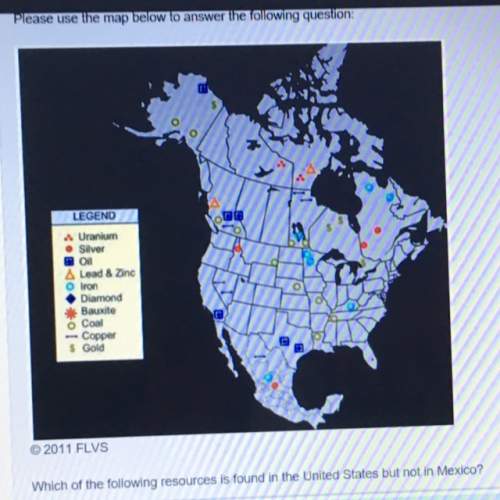PLEASE READ THE TEXT AND ANSWER THE QUESTIONS. THANK YOU!!
Doc A
Majority Opinion, Ples...

History, 15.04.2021 04:50 wesfleridor
PLEASE READ THE TEXT AND ANSWER THE QUESTIONS. THANK YOU!!
Doc A
Majority Opinion, Plessy v. Ferguson, 1896 The object of the [Fourteenth] amendment was undoubtedly to enforce the absolute equality of the two races before the law, but in the nature of things it could not have been intended to abolish distinctions based upon color, or to enforce social, as distinguished from political, equality, or a co-mingling of the two races upon terms unsatisfactory to either Laws permitting, and even requiring, the separation [of races] in places where they are liable to be brought into contact do not necessarily imply the inferiority of either race to the other, and have been generally, if not universally, recognized as within the competency of the state legislatures in the exercise of their police power
Doc B
Dissenting Opinion, Plessy v. Ferguson, 1896 [I]n the eye of the law, there is in this country no superior, dominant, ruling class of citizens. There is no caste here. Our constitution is color-blind, and neither knows nor tolerates classes among citizens. In respect of civil rights, all citizens are equal before the lawThe destinies of the two races, in this country, are indissolubly linked together, and the interests of both require that the common government of all shall not permit the seeds of race hate to be planted under the sanction of law.
Doc C
Sweatt v. Painter (1950)A case brought against the University of Texas Law School, provided the first opportunity to compare a law school established by the state for whites with a supposedly similar facility for blacks. The University of Texas Law School had denied Sweatt entering, on the ground that he could attend a recently created law school, which at the time it opened had no full-time faculty and no library. In that case, the Supreme Court for the first time ordered a white university to admit a black student. Although the Court refused to review Plessy v. Ferguson (1896), a dark stain on the record, it nevertheless found that the two schools were not equal
Doc D
Unanimous Majority Opinion, Brown v. Board of Education, 1954 In approaching this problem, we cannot turn the clock back to 1868 when the [Fourteenth] Amendment was adopted, or even to 1896 when Plessy v. Ferguson was written. We must consider public education in the light of its full development and its present place in American life throughout the Nation. Only in this way can it be determined if segregation in public schools deprives these plaintiffs of the equal protection of the laws. Today, education is perhaps the most important function of state and local governments. ...In these days, it is doubtful that any child may reasonably be expected to succeed in life if he is denied the opportunity of an education. Such an opportunity, where the state has undertaken to provide it, is a right which must be made available to all on equal terms To separate [students] from others of similar age and qualifications solely because of their race generates a feeling of inferiority as to their status in the community that may affect their hearts and minds in a way unlikely to ever be undone. ...Whatever may have been the extent of psychological knowledge at the time of Plessy v. Ferguson, this finding is amply supported by modern authority We conclude that in the field of public education the doctrine of “separate but equal” has no place. Separate educational facilities are inherently unequal. Therefore, we hold that the plaintiffs and others similarly situated ... are, by reason of the segregation complained of, deprived of the equal protection of the laws guaranteed by the Fourteenth Amendment.
1. Rewrite Docs A and B into your own words.(2pts)
2. Compare and contrast Docs A and B(2pts)
3. In Doc C why did the Supreme Court rule that the University of Texas had to enroll an
African American Student?(1pts)
4. Looking at Docs A and B(the Plessy case) and Doc C(the Sweatt case) what can you infer
about the changing cultural norms in the US?(5pts)
5. Look at Docs D(the Brown case) and A(the Plessy case). How does the Brown ruling
overturn the Plessy ruling? What does the Supreme Court cite to support their ruling in
the Brown case? Be specific.(5pts)
6. Looking at the reading and all of the Docs, in your opinion is the Supreme Court more
reactionary to social change in the US or is it more of a catalyst of social change.(10pts)

Answers: 2


Another question on History


History, 21.06.2019 21:00
Which of the following was a goal of european conservation in the early 1800
Answers: 1

History, 22.06.2019 01:30
What explains the increase in life expectancy in botswana? a. the increased availability of jobs and an improved economy b. access to antiretroviral drugs, hiv/aids education, and widespread hiv/aids testing c. a series of military takeovers that stabilized the political system and led to education reform and increased literacy rates d. a recent military coup that led to an improved healthcare system select the best answer from the choices provided.
Answers: 3

You know the right answer?
Questions

Geography, 16.04.2020 20:03

Mathematics, 16.04.2020 20:03




History, 16.04.2020 20:03



Mathematics, 16.04.2020 20:03







Mathematics, 16.04.2020 20:03

Mathematics, 16.04.2020 20:03

Mathematics, 16.04.2020 20:03

Computers and Technology, 16.04.2020 20:03




